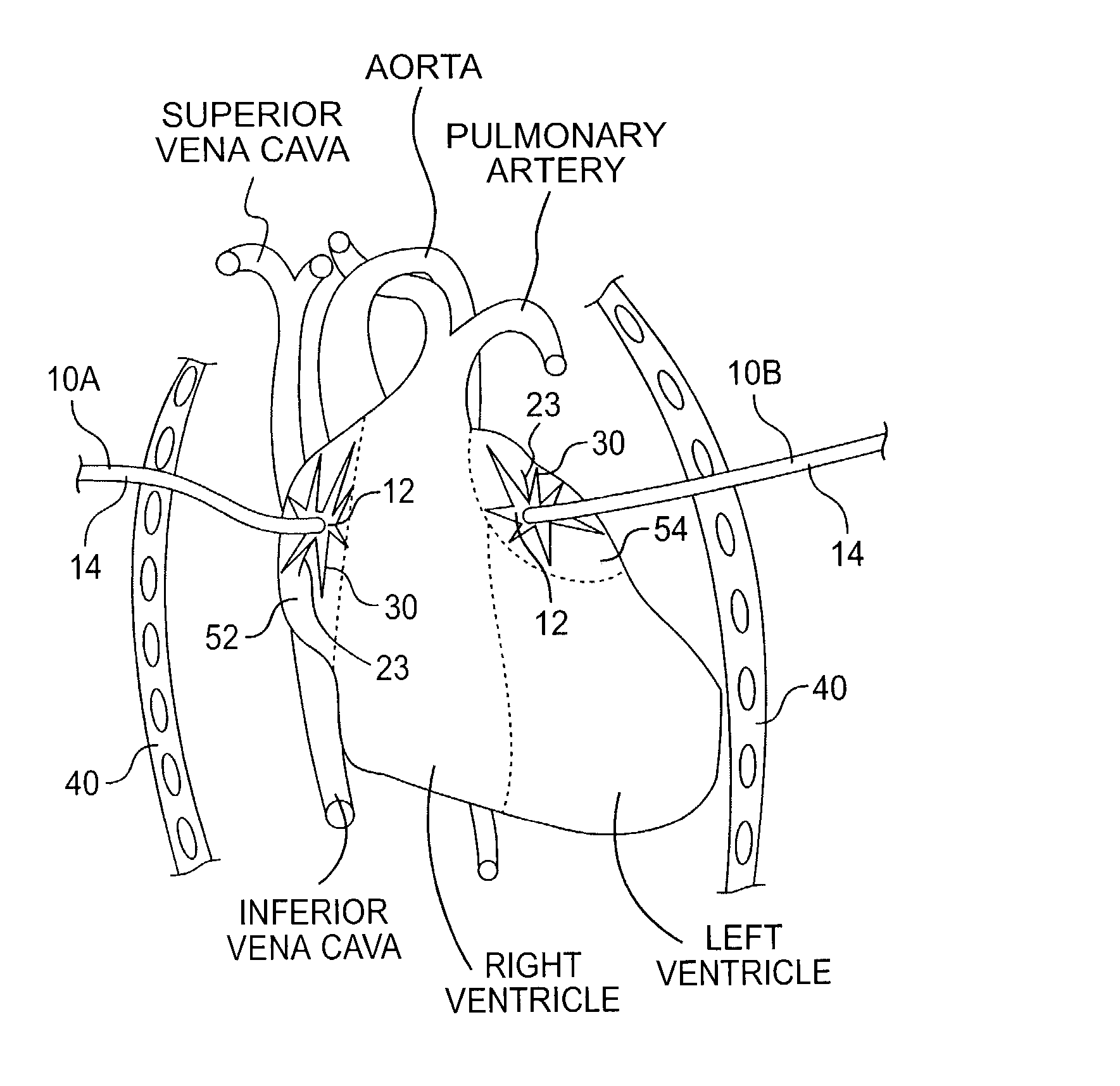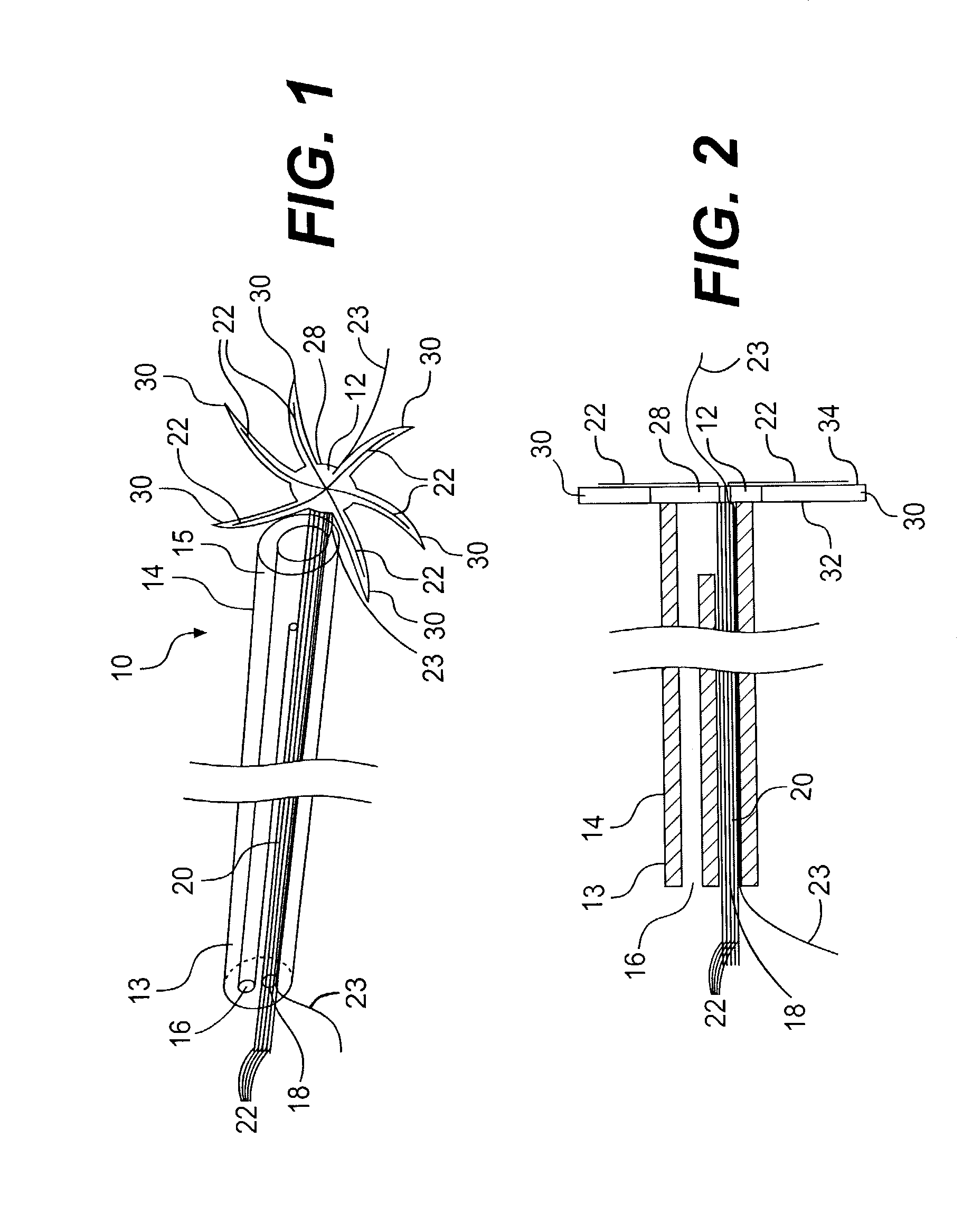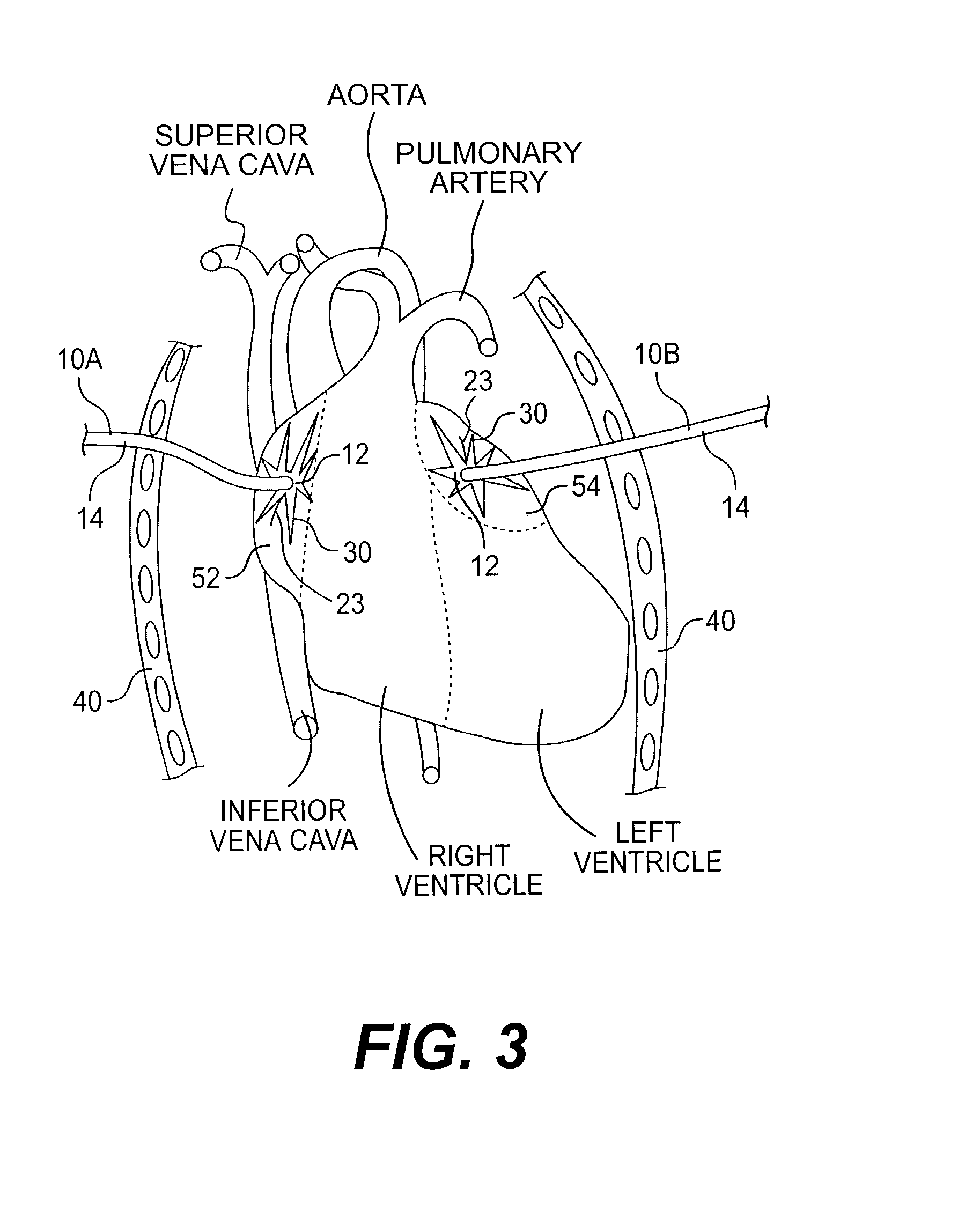Implantable device for treating atrial fibrillation and method of using same
a technology of implantable devices and atrial fibrillation, which is applied in the field of preventing and treating atrial fibrillation, can solve the problems of prolonged hospitalization, increased thromboembolic events, and often inducing hemodynamic instability by the febrillator
- Summary
- Abstract
- Description
- Claims
- Application Information
AI Technical Summary
Problems solved by technology
Method used
Image
Examples
first embodiment
[0080]In the removable method, the pad 12 (spiral shaped pad 82) is pulled along with the electrode portions 22 (wire 84) into the lumen 18 housing the electrode 20 (electrode 80). It should be noted that if the lumens 16, 18 merge at the distal end 15 of the catheter 14 (as shown in FIGS. 1 and 5), this will aid the physician in pulling the pad 12 (spiral shaped pad 82) and electrode portions 22 (wire 84) into the catheter 14. After the pad 12 (pad 82) and electrode portions 22 are (wire 84) pulled into the lumen 18, the device 10 (device 100) can be removed from the patient by pulling the catheter 14 through the chest wall 40. If more than one device 10 (device 100) is used in treating the patient, the additional devices 10 (devices 100) may be removed in a similar manner.
second embodiment
[0081]In a second embodiment, the pad 12 (pad 82) is bioabsorbable. In this embodiment, the pad 12 (pad 82) is designed to be bioabsorbed over the time during which the device 10 (device 100) is implanted, i.e., within 30 to 40 days. After the pad 12 (pad 82) has been bioabsorbed, the electrode portions 22 are (wire 84 is) readily pulled into the lumen 18 in the catheter 14 housing the bundled electrode 20 (electrode 80). It should be noted that if the lumens 16, 18 merge at the distal end 15 of the catheter 14 (as shown in FIGS. 1 and 5), this will aid the physician in pulling the electrode portions 22 (wire 84) into the catheter 14. At this time, and similar to the previously described embodiment, the catheter 14 may be pulled through the patient's chest wall 40. Again, if more than one device 10 (device 100) is used in treating the patient, the additional devices 10 (devices 100) may be removed in a similar manner.
PUM
 Login to View More
Login to View More Abstract
Description
Claims
Application Information
 Login to View More
Login to View More - R&D
- Intellectual Property
- Life Sciences
- Materials
- Tech Scout
- Unparalleled Data Quality
- Higher Quality Content
- 60% Fewer Hallucinations
Browse by: Latest US Patents, China's latest patents, Technical Efficacy Thesaurus, Application Domain, Technology Topic, Popular Technical Reports.
© 2025 PatSnap. All rights reserved.Legal|Privacy policy|Modern Slavery Act Transparency Statement|Sitemap|About US| Contact US: help@patsnap.com



